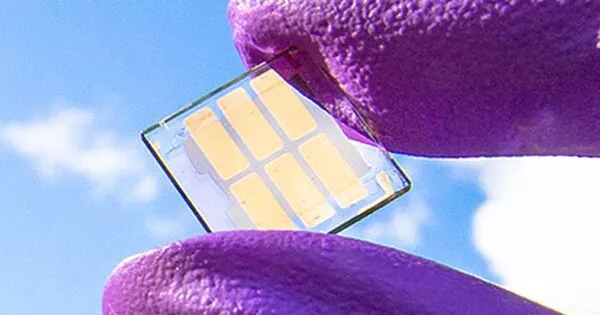Quantum dot solar cells (QDSC) are a form of photovoltaic technology that uses quantum dots’ unique features to convert sunlight into power. It is a solar cell design that employs quantum dots as the photovoltaic material of choice. It tries to replace bulk materials like silicon, copper indium gallium selenide (CIGS), and cadmium telluride (CdTe). Quantum dots are nanoscale semiconductor materials that, due to their small size, exhibit quantum mechanical effects, resulting in tunable electrical and optical properties.
The bandgaps of quantum dots can be adjusted across a wide range of energy levels by adjusting their size. The bandgap in bulk materials is determined by the material(s) used. Because of this feature, quantum dots are appealing for multi-junction solar cells, which use a range of materials to boost efficiency by harvesting multiple regions of the solar spectrum.
By 2022, efficiency will have surpassed 18.1%. By employing hot photogenerated carriers to produce greater photovoltages or higher photocurrents, quantum dot solar cells have the potential to raise the highest possible thermodynamic conversion efficiency of solar photon conversion up to around 66%. When quantum dots are integrated into solar cells, they offer several advantages over traditional photovoltaic materials like silicon:
- Tunable Absorption: Controlling the size and composition of quantum dots allows them to absorb specific wavelengths of light. This enables for more efficient sunlight absorption because they may be tailored to match the solar spectrum.
- Multiple Exciton Generation: Due to the quantum confinement phenomenon, quantum dots can generate many electron-hole pairs (excitons) from a single photon. This phenomena has the potential to improve the overall efficiency of a solar cell.
- Solution Processability: Because quantum dots can be manufactured in solution and deposited on a variety of substrates, they are well suited for low-cost, solution-based manufacturing techniques.
- Size-Dependent Bandgap: The bandgap of quantum dots varies with size, allowing a single material to absorb a wide variety of photon energy. This can improve the performance of the quantum dot solar cell under different illumination situations.
- Reduced Material Usage: Quantum dots can be used in thin-film solar cells, which can significantly reduce the amount of material needed for solar panel production.
However, there are also challenges associated with quantum dot solar cells:
- Stability: Quantum dots are susceptible to environmental conditions such as temperature and moisture, which may compromise their long-term stability.
- Toxicity: Some quantum dot materials may include toxic metals such as cadmium, raising worries about their environmental and safety impact.
- Cost: While quantum dots have the potential to enable low-cost manufacturing, large-scale production and commercial viability remain problems.












